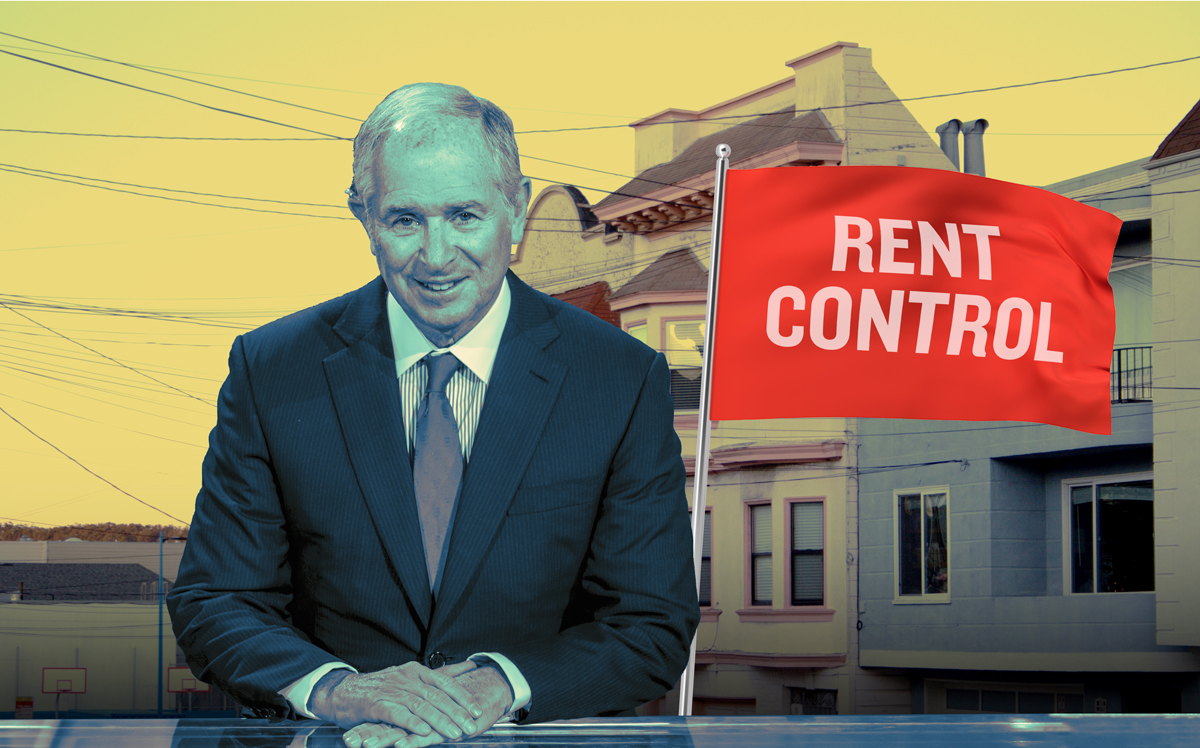Trending
Here’s why landlords don’t hate California’s rent control bill

UPDATED, Sept. 25, 12:26 p.m.: A powerful statewide trade organization lobbied behind the scenes to extend Assembly Bill 1482, what’s being called California’s most sweeping rent control measure in decades. That effort paid off and earlier this month, the bill passed the state Senate with a 10-year-term, up from its proposed three years.
The push came from an unlikely place: the California Apartment Association. The real estate trade organization represents landlords and property owners, a group that doesn’t usually seek to extend the life on a massive rent control bill. In fact, CAA had publicly opposed the rent control measure from the start.
But after successfully negotiating a seven-year sunset clause, extended to 10 years, CAA dropped that opposition. The California Business Roundtable — a group of 200 CEOs that counts Blackstone’s Stephen Schwarzman among its members — also supported the bill. A person familiar with the business roundtable said it supported AB 1482 because the legislation “provides certainty and encourages new construction.”
Billed as the state’s most comprehensive rent reform legislation in decades, tenant advocates say it is not nearly as transformative or tenant-friendly as measures in New York state and Oregon.
AB 1482 caps rent increases at 5 percent plus the consumer price index, which has been well above the median annual rent increases in high-priced Los Angeles, San Francisco and San Diego. It does implement “just cause” eviction protections statewide, which places stricter limits on evictions.
Two key provisions of the measure gave the real estate industry comfort. AB 1482 would not prevent deregulation of vacant units, meaning a landlord could still substantially raise the rent on a rent-controlled unit that is vacated. Under the measure, cities cannot implement rent hike caps lower than 5 percent even if the 1995 Costa-Hawkins Rental Housing Act ever gets repealed. Costa-Hawkins bans California municipalities from enacting their own rent limits.
AB 1482 lets the real estate industry avoid having to contend with multiple local rent laws, tenant advocates and industry pros say.
Tenant advocates who continue to push for the repeal of Costa-Hawkins say that the new measure doesn’t do enough to protect the renter and still lets landlords reap considerable profits.
California’s measure comes amid a deepening housing crisis. More than half of the unsheltered homeless in the U.S. are in California, according to a Housing and Urban Development report. And more than half of California renters are “rent-burdened,” paying more than 30 percent of their income toward rent, according to a Harvard study.
The California Business Roundtable’s support of the latest version of AB 1482 was in sharp contrast to Blackstone’s opposition to Proposition 10, last year’s failed statewide ballot measure that would have greatly opened the door to rent control. Voters rejected Prop 10 last November, but it has prompted several cities in Greater L.A., along with L.A. County, to adopt their own temporary rent freeze measures. Those measures would for the most part remain on the books under AB 1482.
Blackstone, which has been an active investor in the Los Angeles area and in California, also opposed New York state’s recent expansion of tenant protections.
“There were very different arguments” on these very different measures, said the person familiar with the business roundtable, referring to the New York rent reform package and Prop 10. “The devil is in the details.”
Not everyone in the real estate industry was on board with AB 1482.
CAA’s support drew the ire of another trade group: the California Association of Realtors, a group that primarily represents smaller landlords and real estate brokers. The organization, which said it was “disappointed” with CAA’s support of AB 1482, successfully lobbied to exempt single-family homes and condos from the bill. The exemptions do not apply in the case of limited liability corporation owners, real estate investment trusts or corporations, which accounts for the membership base of CAA.
For CAA, meanwhile, the 10-year sunset clause creates certainty for multifamily investors and lenders. They can now underwrite deals with AB 1482’s rent caps and tenant protection measures in mind, said Dan Tenenbaum, a founding principal of Brentwood-based Pacific Crest Realty. Tenenbaum is on the 17-member board of directors for CAA’s Los Angeles chapter.
“The apartment industry wants certainty. When you ask most developers, their biggest concern is the unknown,” Tenenbaum said.
Maintaining Costa-Hawkins
Tenenbaum said there is another upside to the rent control measure for the real estate industry: supporting a bill the industry could live with may diminish ongoing calls to repeal or amend Costa-Hawkins.
The statewide measure bars local governments from regulating apartments built after 1995. Tenant advocates, led by the AIDS Healthcare Foundation, tried and failed to repeal the law through the Prop 10 ballot last year. Real estate interests spent more than $75 million to fight the measure, which voters soundly rejected.
Now, tenant advocates are nearing enough signatures to bring back a similar ballot measure, which they are calling the Rental Affordability Act. It would amend Costa-Hawkins, allowing cities to eliminate vacancy decontrol, something the real estate industry strongly opposes. Critics call it Prop 10 2.0, and the CAA has vowed to fight as vigorously against it as the original version. That new ballot measure would also allow for units built in 2004 or before to be regulated, the same as AB 1482.
“[AB 1482] counteracts the additional attractiveness of Prop 10 2.0 by saying ‘there’s already effectively rent gouging limits that are being placed,’” Tenenbaum said. “It won’t solve the problem, but it moderates the story that people get significant rent increases.”
CAA communications director Mike Nemeth said that CAA’s engagement on AB 1482 was about “making AB 1482 something our members could live with,” but acknowledged that its ultimate form may play to the 13,000-member organization’s favor in the 2020 election.
“We expect that AB 1482 will take some wind out of the sales of the Prop 10 2.0 campaign,” he said. “And while we don’t support the bill, if it helps preserve Costa-Hawkins and allays more local rent control ordinances, it’d be a welcome side benefit.”
Opponents of rent caps — namely the real estate industry — often argue that caps encourage landlords to raise rents by the maximum allowed each year to “bank” money for renovations or emergencies.
A Zillow analysis from earlier this month found that about 7 percent of California renters saw a rent hike above the AB 1482 cap, but that percentage was higher in hotter markets — around 12 percent of renters in the Bay Area and 30 percent of renters in Vallejo and Sacramento saw hikes above the cap.
Data from the Bureau of Labor Statistics cited in the AB 1482 supporting documentation noted that the proposed cap of 5 percent plus the Consumer Price Index is well above the 2017 median rent increases in three major urban areas. In practice, the allowed annual rent increase would be about 8 percent under the legislation.
“The bill prevents gouging on a one-off basis, but does not stabilize rents,” said René Christian Moya, campaign director for Housing Is a Human Right, the AIDS Healthcare Foundation’s housing advocacy division. “AB 1482 cannot stand on its own. This is not rent control.”
Moya agrees with industry insiders that the measure may be an attempt to pacify more radical demands for rent control, just as the tenant movement is gaining steam nationwide.
“Of course the real estate industry would want this to happen. But for all the money that they have, landlords are a small minority of the state of California,” Moya said.




